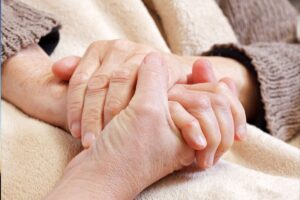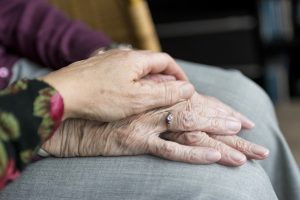Recent news and updates
Guest Blog: Assisted Living Vs. In-home Care: Which Is Right For Your Senior?
Introduction
As our loved ones age, it’s natural to consider their long-term care options. Two popular choices are assisted living and in-home care. Both provide essential services, but they differ in several ways. Making the right decision can be challenging, but understanding the key differences between the two options is crucial.
Whittier assisted living offers both options, and selecting the right one depends on various factors, such as personal preferences, health conditions, and budget. In this article, we will explore the differences between assisted living and in-home care, so you can make an informed decision that ensures the comfort, safety, and well-being of your senior loved one.
Pros and Cons of Assisted Living for Seniors
Seniors who require some level of support with everyday activities can benefit significantly from assisted living, but there are also certain negatives to consider. The following are some benefits and drawbacks of assisted living:
Pros:
- Seniors in assisted living facilities can get care and assistance from qualified carers around-the-clock.
- Seniors can interact with other residents and participate in assisted living activities.
- Seniors may find it more convenient to live their everyday lives thanks to the usual provision of meals, housekeeping, and other services.
Cons:
- The expense of assisted living may not be covered by insurance or government programs.
- Seniors living in assisted living facilities could feel as though they are losing their freedom and simple control.
- Assisted living facilities may provide seniors less privacy than independent living in their own homes.
Overall, assisted living can be an excellent choice for senior citizens who require some help with daily tasks and desire to interact with other seniors. However, when making this choice, it’s crucial to consider the cost and loss of independence.
Would Your Senior Loved One Benefit More From In-Home Care?
In-home care is a popular option when thinking about care alternatives for your elderly loved one. Here are some explanations as to why it might be preferable:
- In-home care offers individualized care catered to your senior’s needs, ensuring they get the support and attention they need.
- Your senior loved one can continue to live in the familiarity and comfort of their own home, which can improve their mental and emotional health.
- Your senior may preserve their independence and autonomy with in-home care, allowing them to enjoy life on their terms.
- If your senior needs minor support with daily living activities, in-home care may be less expensive than assisted living.
Considering these elements, you may decide whether in-home care is a better choice for your elderly relative or friend, enabling them to get the care they require while maintaining their quality of life.
Evaluating Your Senior’s Needs
It’s critical to evaluate the individual needs of your elderly loved one before deciding on assisted living or in-home care.
- Elements to consider include mobility and capacity for daily tasks, including eating, dressing, and bathing.
- It’s vital to consider your senior’s social requests, remembering their requirement for organization and cooperation for bunch exercises.
- Their choice for autonomous or helped living, as well as the administration of their clinical issues and doctor-prescribed meds, are significant elements.
- It’s vital to assess monetary factors, like protection inclusion and clinical costs.
In-Home Thought versus Aided Residing: The Value of Cost Examination
Cost is an essential variable to consider while picking helped dwelling and in-home thought for seniors. The following justifies the importance of cost comparison:
- The monthly cost of assisted living can range from $3,500 to $10,000, while the hourly cost of in-home care is generally between $15 and $30.
- To make an informed decision, it’s crucial to assess the costs of both options and determine which fits within your budget.
- Assisted living may have hidden costs, such as upfront fees, meal plans, and additional services, which can significantly impact the overall cost of care.
- In-home care is more customizable, allowing you to pay only for the services your senior loved one needs, potentially resulting in lower costs.
- The care location can also affect the overall cost, as assisted living may be more expensive in certain areas.
Understanding the Level of Care Your Senior Needs
When choosing between assisted living and in-home care, it is essential to understand the level of care your senior requires.
- If your senior has advanced care needs, such as dementia or Alzheimer’s disease, they may require the specialized care and support provided by an assisted living facility.
- If your senior requires minimal ADL assistance, in-home care may be better.
Choosing Between Assisted Living and In-Home Care
When choosing between assisted living and in-home care, it’s essential to consider each option’s flexibility.
- In-home care allows seniors to remain in the comfort of their own homes and maintain their independence while still receiving necessary care.
- Assisted living provides a more structured environment with 24-hour care and access to various services and amenities.
- Consider the level of flexibility your senior loved one requires and your preferences and lifestyle.
Safety and Security
Safety and security are key considerations when it comes to caring for seniors.
- In-home care may require modifications to the home to ensure safety and accessibility, such as installing grab bars in the bathroom or ramps for wheelchair access.
- Assisted living facilities provide 24-hour supervision, emergency response systems, and secure environments to ensure the safety and well-being of residents.
- Consider the specific safety needs of your loved one, such as fall risks or wandering behaviors, and evaluate which option can provide the necessary support and security.
By prioritizing safety and security, you can ensure your senior loved one receives the care they need in a safe and comfortable environment.
Evaluating Your Options and Making an Informed Decision
Ultimately, finding the right fit for your senior loved one requires careful evaluation of all options.
- Research and visit potential facilities or in-home care providers to evaluate their services and amenities.
- Consider the costs, level of care, and flexibility of each option, as well as the specific needs and preferences of your loved one.
- Don’t hesitate to ask questions and seek advice from healthcare professionals, family members, or friends who have gone through a similar experience.
By evaluating your options and making an informed decision, you can ensure that your senior loved one receives the care and support they need to live a happy and healthy life.
Conclusion
In conclusion, deciding between assisted living and in-home care for your senior loved one can be difficult. It is essential to carefully consider their unique needs and preferences and the level of care and support they require. With the help of resources like Whittier assisted living, you can make an informed decision that supports your senior’s overall well-being and quality of life.





